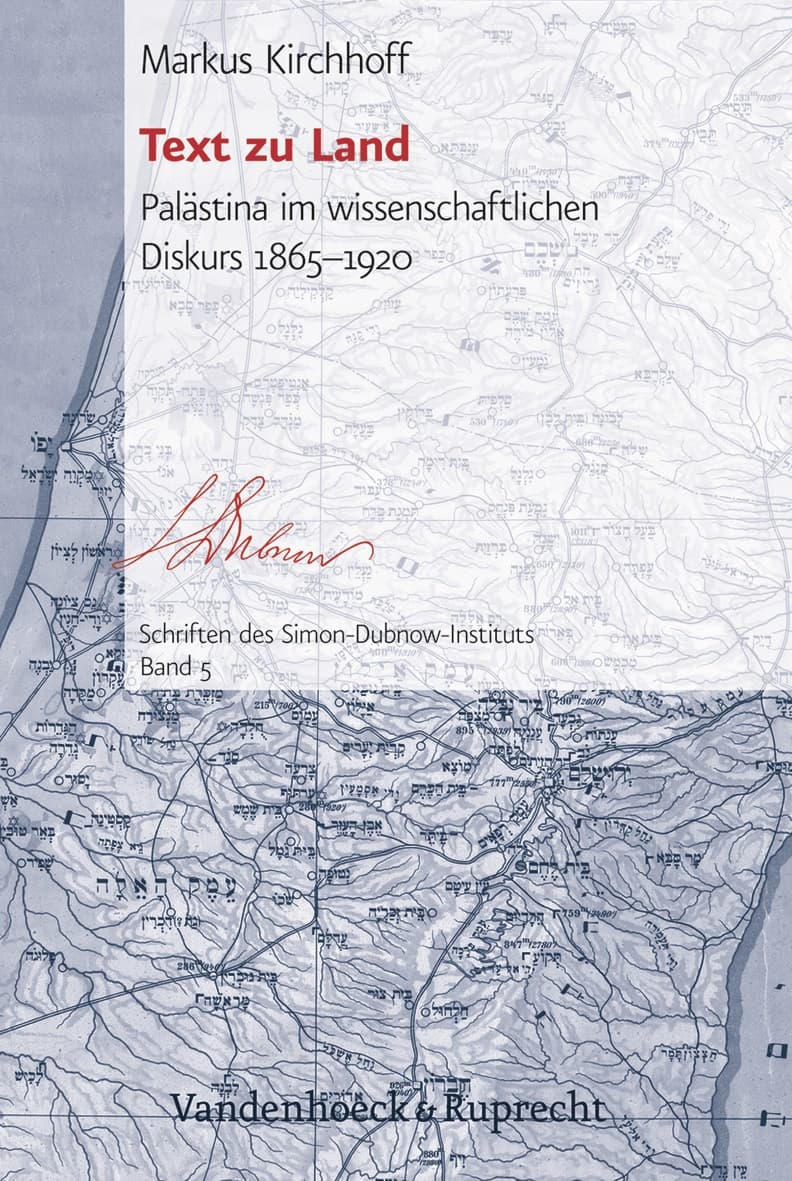Volume 5
Text zu Land
Palästina im wissenschaftlichen Diskurs 1865–1920

This study concentrates on Christian largely Protestant research on Palestine in the ninteenth century, as well as Jewish involvement in this endeavor. Markus Kirchhoff shows how the country was discovered anew through history, archeology, geography and ethnography. The numerous legends and often repeated stories, the »legendary topography of the Holy Land« (Maurice Halbwachs) were now to be supplanted by scientifically grounded knowledge. Palestine was primarily viewed as a biblical land, as the stage of action for the Old and New Testament. This enterprise was the expression of a Christian and Jewish sense of self that was bent on confronting the challenges of modernity and sought to apply scientific approaches to this country as well. In addition, research on Palestine had political relevance, both for Zionism and for British policy and politics in the region: both were united by a motivation to reanimate Palestine's historical geography once again, now reconfigured as a political geography.
The first section of the book sketches the political and cultural frame for Palestine Studies. This is contrasted with a look at the importance of ancient and modern Greece since the Enlightenment and Classical Period in Germany. That is followed by a section exploring the role of Greece and Palestine in cultural and diplomatic history. The growing interest in Palestine in the second third of the nineteenth century is then taken as the point of departure for examining collective and cultural memory in regard to the Holy Land.
The second section explores the institutionalization of Palestine Studies and its most important contributing disciplines, namely archeology, geography and ethnography. There are also studies on Jewish participation in research on Palestine and the ways the Zionists made use of their results.
The third section looks again at the relation between science and diplomacy in the years immediately before and after the introduction of the Palestine mandate. During WW I, the view crystallized that after the downfall of the Ottoman Empire, Palestine should become a state. Historical ethnography and geography now were transposed into political geography. The final sections analyze in detail this complex relation between science and politics in connection with the establishment of Palestine.
425 pp. with 13 illustrations, Hardcover with dust jacket
Göttingen: Vandenhoeck & Ruprecht, 2005
ISBN: 978-3-525-36983-8
Price: 57,00 € (D)
Order

